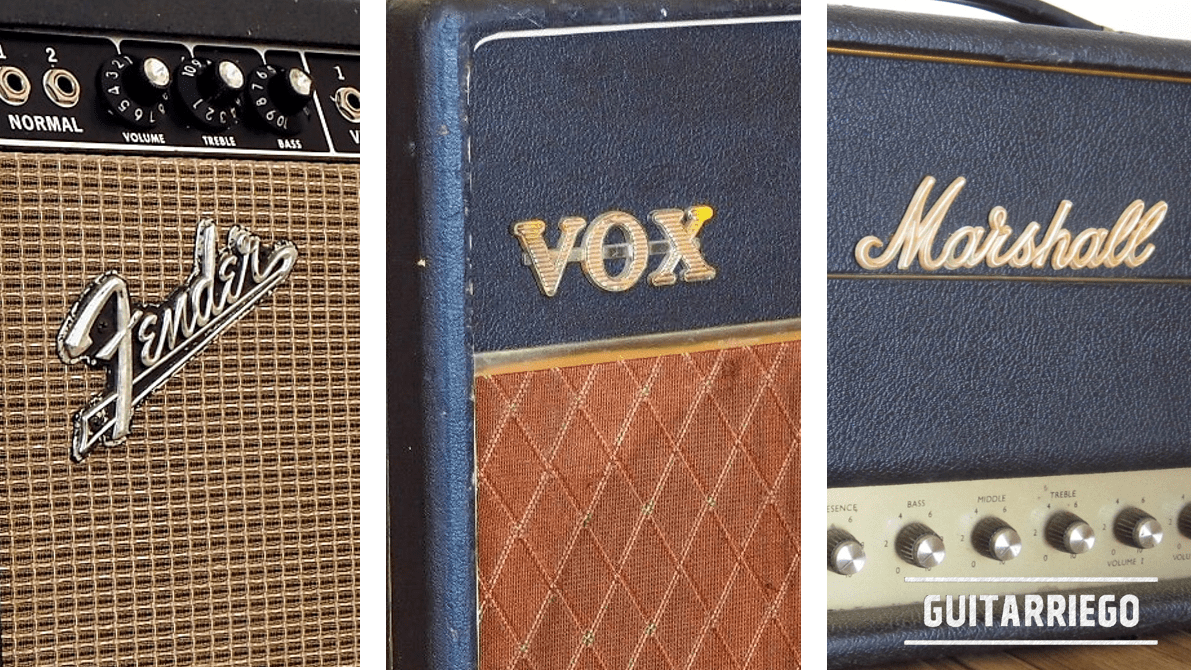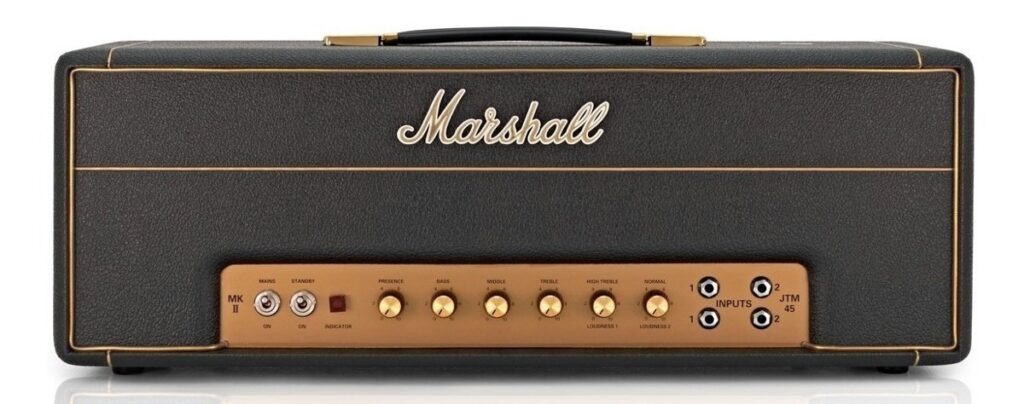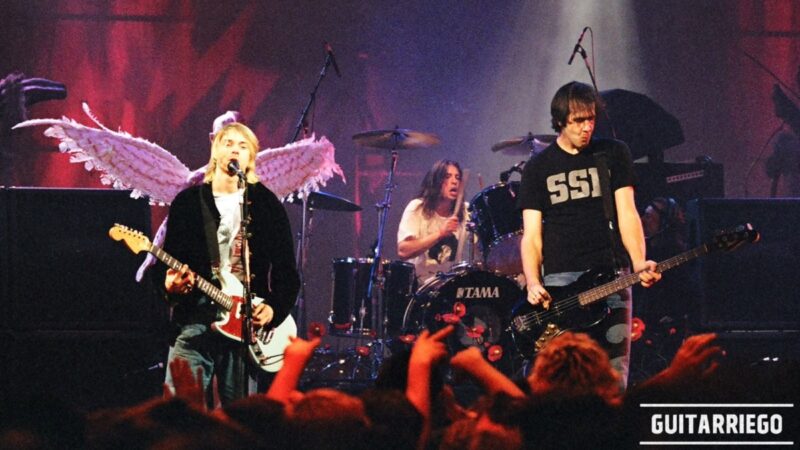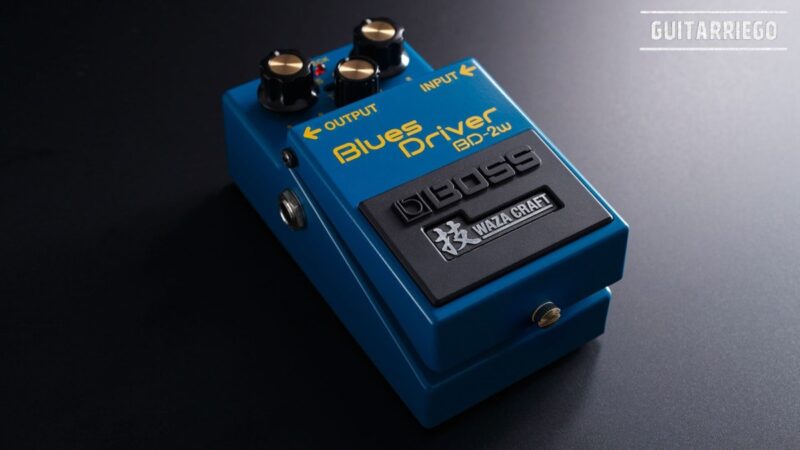Best Classic Vintage Amps: Fender, Vox, and Marshall

The Holy Trinity of classic vintage guitar amps: Fender, Vox and Marshall. Without a doubt, for vintage audio they are the three best amplifiers ever, true legends of tone. The teams that we will see here have marked the sound that our parents or even our grandparents grew up with.
Fender amps: American vintage audio
To start with the early classic amps, check out Fender, who defined vintage American audio. They are characterized by their clean and bell sound.
Fender Blackface
The most representative models are Deluxe Reverb 22w, Vibrolux 35w and Twin Reverb 85w. They are all from the mid-60’s, from the famous “Blackface” era, which was given a black panel identification.
They are tube amps with good headroom, that is, they keep the audio clean at high volumes. In addition, they have a “Scooped” tone: treble and bass more preponderant than medium, giving a “V” equalization.
The popular Spring reverb is a trademark of the Blackface and later Fender lines. They usually used Jensen speakers / loudspeakers, which are characterized by good brightness and definition and soft mids ideal for clean tones.
Fender Tweed
There are also other models that are characterized by other more medium and hoarse tones. This is the line before the Blackface known as “Tweed”, because of the weave of the fabric with which the cabinets were lined. This line from the early 50s has a characteristic overdriven, “fuzzy” audio. An example is the Deluxe and the legendary Bassman, which is actually a bass amp that guitarists made their own. In the photo below you can see a Bassman, an amplifier that Jim Marshall used as the basis for designing the JTM-45 and Bluesbreaker.
The typical Fender power tubes and “American” audio in general are the 6L6 and 6V6.
Vox amps: the classic British tone
Other classic amplifiers par excellence are the Vox. With their Vox AC15 and AC30, released in 1958 and 1960 respectively, Vox started the history of the “British sound”. Although many people think they are Class A electronic amplifiers, they are actually Class AB1. They use EL84 power tubes and Celestion speakers – initially with alnico magnet and later ceramic – which have different tonal characteristics from those used by Fender. Another relevant difference is that they do not use negative feedback, a technique used to expand the headroom of the amplifiers. While the lack of negative feedback reduces the ability to keep clean, it has the advantage of giving great touch sensitivity, a highly appreciated feature of the Vox.
These legendary vintage amps and their British audio can be heard on records by bands like The Beatles, Rollings Stones, Queen’s Brian May, U2, and many others.
The Vox are amplifiers with little headroom, that is, they tend to drive fast, medium, but with a very good high end that gives it its characteristic audio and its “chime”.
Marshall amps: vintage rock audio
Marshall, classic amps par excellence for Rock. In 1963, England, Marshall released the JTM-45, a head amp based on the Fender Bassman, but using 12AX7 tubes in the pre and KT66 or EL34 in the Celestion stem and speakers. From this amp comes the 2×12 combo that thanks to Eric Clapton was christened “Bluesbreaker”.

Two years later, at the request of Pete Towshend who wanted a more powerful amplifier, Marshall released the 1959SLP 100w, better known as Plexi, probably the most iconic amp in the history of Rock. This amp can be heard in many ’70s rock bands, like AC / DC and Led Zeppelin, Angus Young with his Gibson SG and Jimmy Page with his Gibson Les Paul.
In 1981, another legendary Marshall was released, the JCM800, an amp that marked an era, used by Slash in the early years of Guns’ n Roses. The Marshall sound is characterized by its medium and overdriven tone.
A video showing the Fender Deluxe Reverb RI68 Custom, the Vox AC-30 and the Marshall JCM-800:
For more information on the guitar, visit Fender, Marshall and Vox web sites.
Related Post: The 16 Most Iconic Classic Guitar Amps Ever.
You can share opinions or also chat about this and more with other musicians in our comments section.






